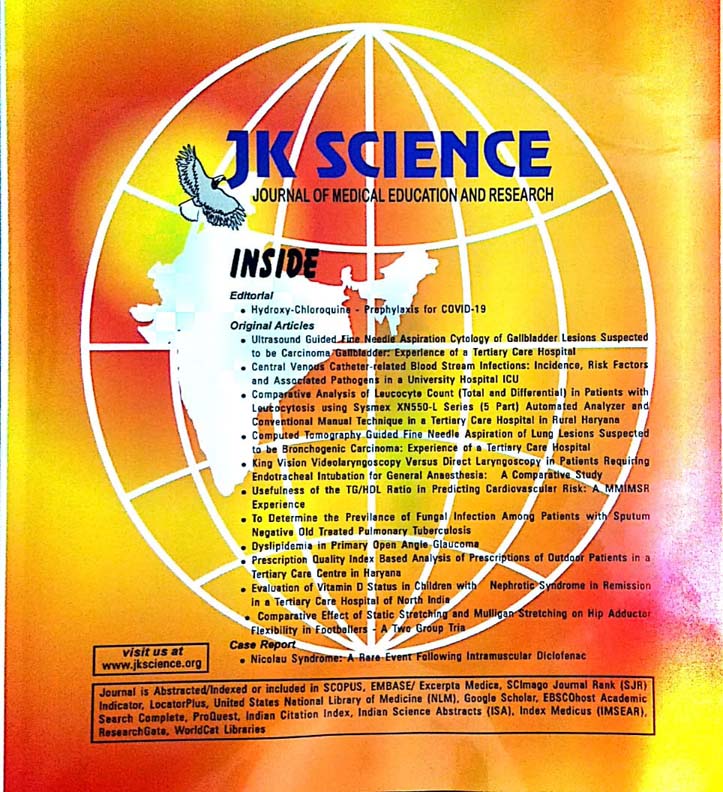Pattern and Clinical Profile of Congenital Heart Disease in a Teaching Hospital
Keywords:
Congenital heart disease, 2-dimension echocardiography, Ventricular septal defect (VSD)Abstract
Background: Congenital heart disease (CHD) is the commonest of all congenital lesions and is the most common type of heart disease among children. Knowing its pattern and clinical profile may help to detect and treat it at an earlier age, thus improving outcome and prognosis of the disease. Purpose: To study the pattern and clinical profile of Congenital Heart Disease in a Private Teaching Hospital. Material and Methods: It was a prospective study conducted in the indoor and outdoor wings of Department of Pediatrics and Cardiology, ASCOMS and Hospital, Sidhra, Jammu over a period of two years.120 children suspected to have congenital heart disease were enrolled for the study. Results: Out of 100 infants males (54%) outnumbered females (46%) with a ratio of 1.17:1 and among them 12% were neonates and 40% presented in late infancy. 68% of the infants had acyanotic heart disease whereas 32 % had cyanotic heart diseases. Frequently observed complications were growth failure (27%), heart failure (21%), recurrent chest infections (17%), pulmonary hypertension (4%) and cerebral abscess (2%). Conclusion: Acyanotic congenital heart diseases far outnumber the cyanotic counterparts. Ventricular septal defect (VSD) is the commonest acyanotic heart disease and Tetralogy of Fallot (TOF) is the commonest in cyanotic variety. Infants with feeding difficulty, poor weight gain and recurrent chest infections should make one suspect of congenital heart disease.
Downloads
Downloads
Published
How to Cite
Issue
Section
License
Copyright (c) 2021 JK Science: Journal of Medical Education & Research

This work is licensed under a Creative Commons Attribution-NonCommercial-ShareAlike 4.0 International License.





